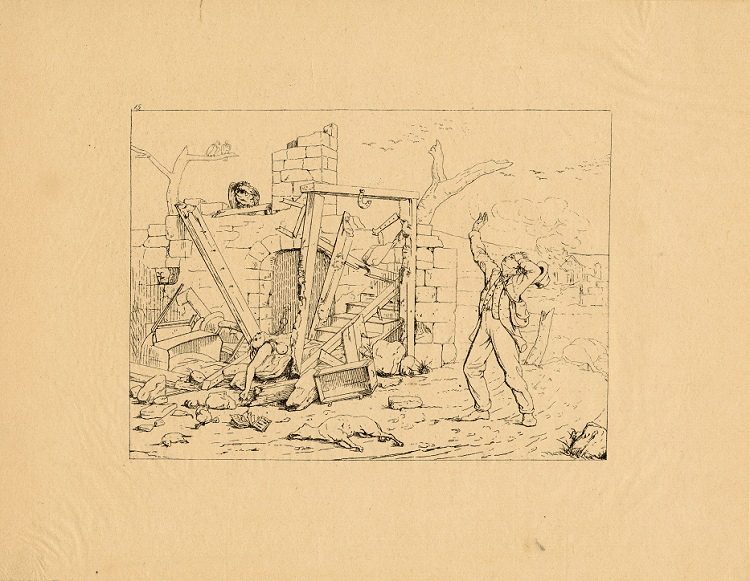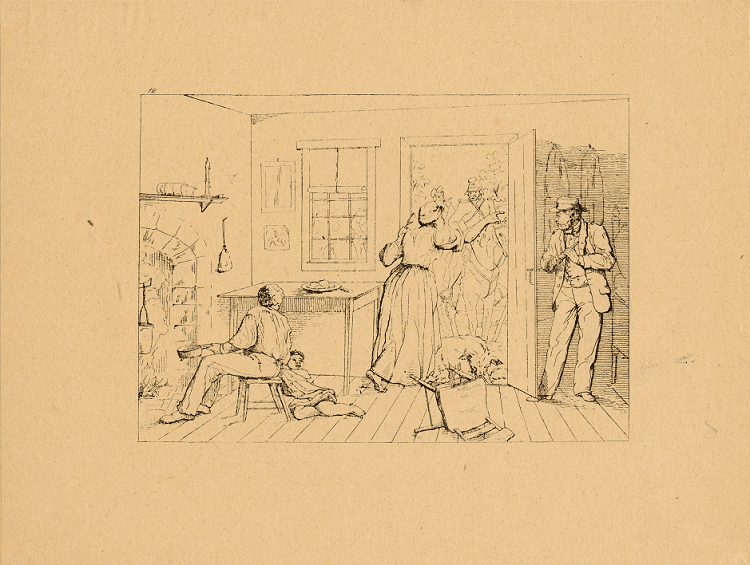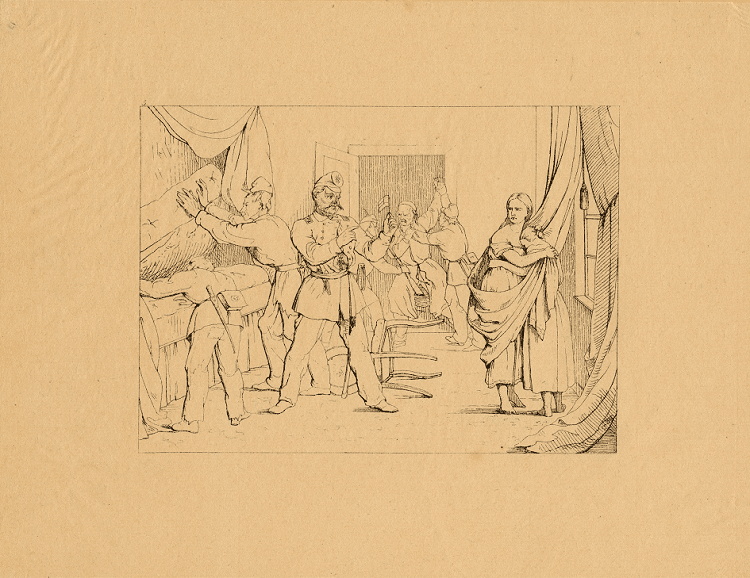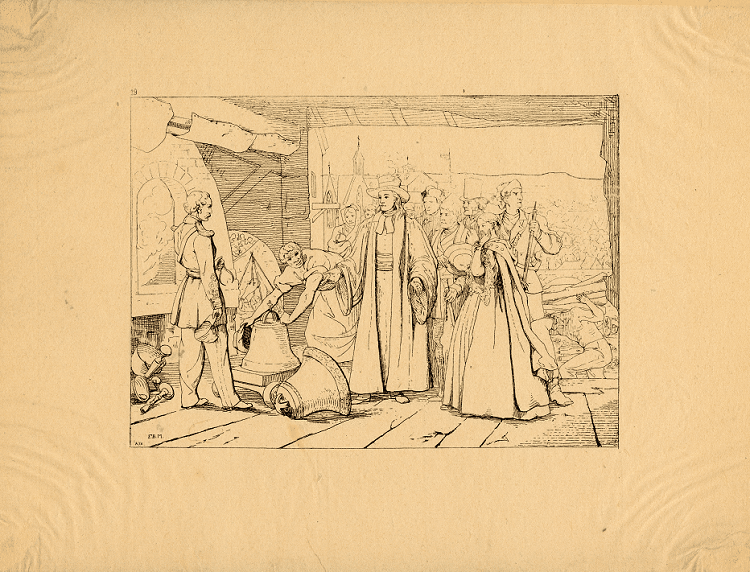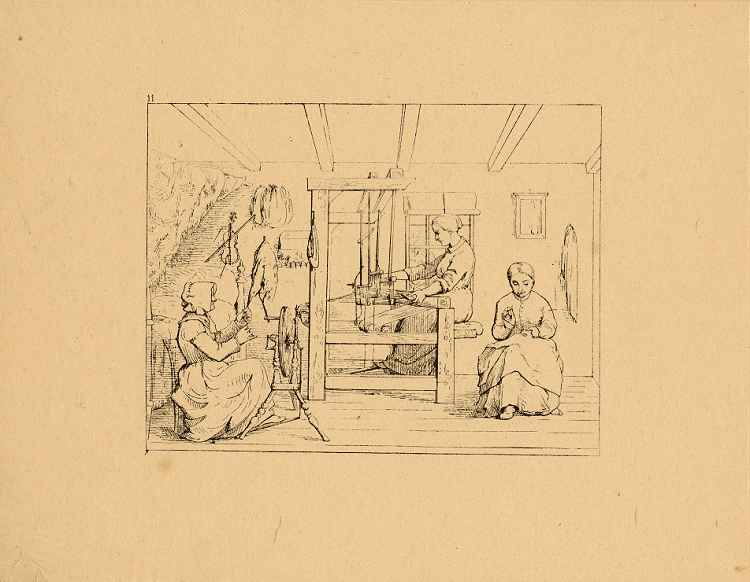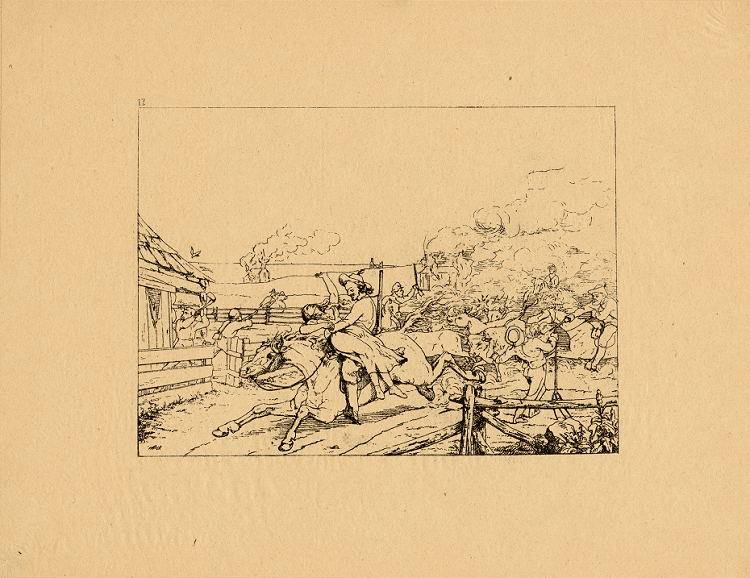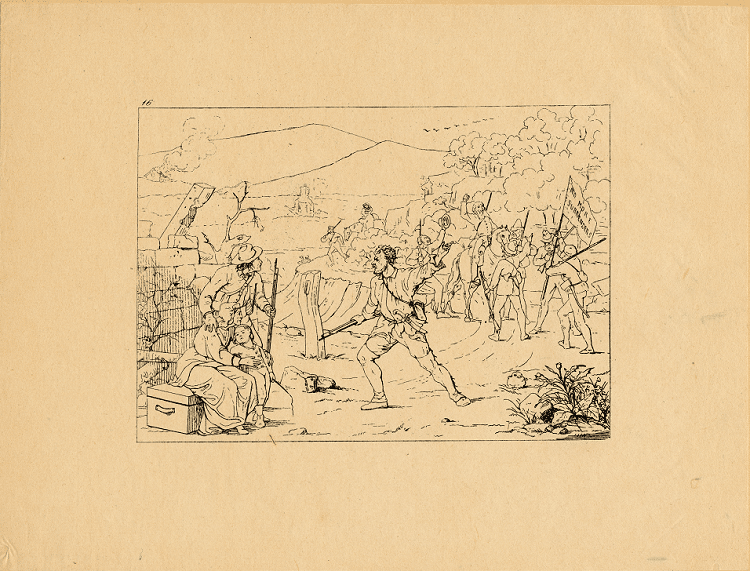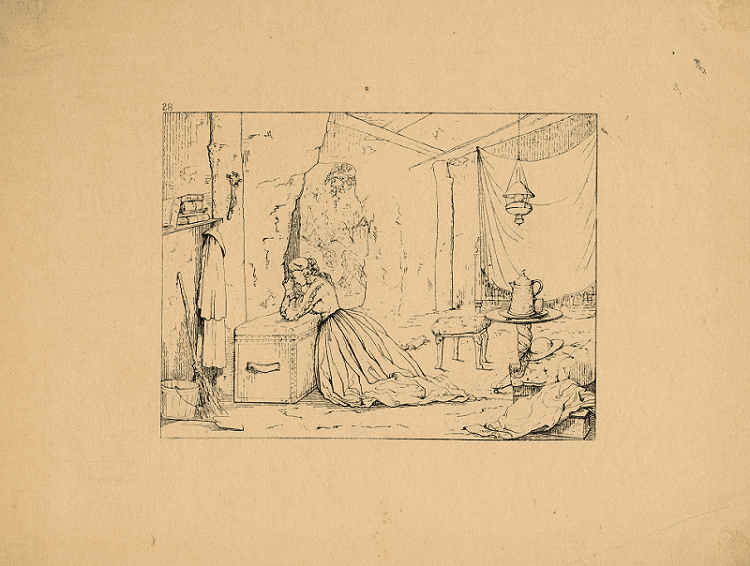Background
Confederate women experienced the ravages of the Civil War more intimately than Union women. Both nations lost husbands, sons, fathers, and brothers, but the smaller population of the Confederacy meant that these losses added up to a higher percentage of the total population. The loss of trade throughout the war meant that Confederate women lacked the food and goods they needed to survive. And by the war’s end, nearly every part of the Confederacy had been invaded or occupied by Union troops, bringing the violence and horrors of the battlefield directly into many women’s lives and homes.
About the Image
These engravings were created by Dr. Adalbert John Volck during the first half of the Civil War. Volck was a German immigrant who worked in Baltimore as a dentist. He created the engravings as a response to the pro-Union work of another German immigrant artist named Thomas Nast. Volck wanted to make illustrations that were sympathetic to the Confederacy. In all, he published 30 engravings that he circulated to 200 subscribers.
These nine engravings from Volck’s collection highlight the struggles and efforts of Confederate women. Because Volck’s goal was emotional impact rather than accuracy, the scenes should not be taken as absolute fact. However, they do evoke the trials and tribulations experienced by Confederate women throughout the war.
Vocabulary
- Confederate: Relating to the group of states that seceded from the United States before the Civil War in order to preserve slavery.
- engraving: A picture made from an engraved plate of metal or wood.
- Union: The name for the states that remained a part of the United States during the Civil War.
Discussion Questions
- What do these scenes reveal about life on the Confederate home front?
- Why do you think Volck dedicated so many of his 30 engravings to the experiences of Confederate women?
- What is the value of examining works of art that don’t necessarily depict exact events?
Suggested Activities
- Use these images to illustrate lessons about life in the Confederate home front.
- To investigate how Confederate women worked to bypass the Union blockade, read Smuggling.
- Teach these images together with excerpts of Carrie Berry’s war diary and ask students to compare Carrie’s lived experience with Volck’s dramatizations.
- Ask students to research the pro-Union engravings of artist Thomas Nast and create a poster comparing how Nast and Volck elicited sympathy for their causes.
- Volck’s entire portfolio of engravings is available on the New-York Historical Society website. Ask students to examine the complete works of Volck and then write a short essay about how his depictions of women fit within his larger body of work.
- For an in-depth lesson on the experiences of women in the Confederacy, combine this resource with any of the following: Smuggling, Surviving the Siege of Atlanta, Changing the Rules of War, Civil War Political Cartoons, Cherokee Home Front, Swearing Loyalty, Life Story: Emily Jane Liles Harris, Life Story: Loreta Janeta Velázquez, and Life Story: Ella Gertrude Clanton Thomas.
- To compare the home front experiences of women in American wars, combine these resources with any of the following: Fear and Danger in New York, Army Wife, Madam Sacho and Sullivan’s Army, Reflections from the Home Front, Life Story: Nancy Morgan Hart, and Life Story: Catharine Littlefield Greene.
- For a larger lesson about the ways women contributed to Union and Confederate war efforts during the American Civil War, teach these resources together with any of the following: Life Story: Sojourner Truth, Nursing, Sanitary Fairs, Women’s War Production, Women Soldiers, Smuggling, Changing the Rules of War, Life Story: Elizabeth Blackwell, Life Story: Emily Jane Liles Harris, Life Story: Loreta Janeta Velázquez, Life Story: Harriet Tubman, Life Story: Susie Baker King Taylor, and Swearing Loyalty.
Themes
AMERICAN CULTURE; DOMESTICITY AND FAMILY
New-York Historical Society Curriculum Library Connections
- For more resources on women’s abolitionist activism, see Saving Washington: The New Republic and Early Reformers, 1790–1848.



